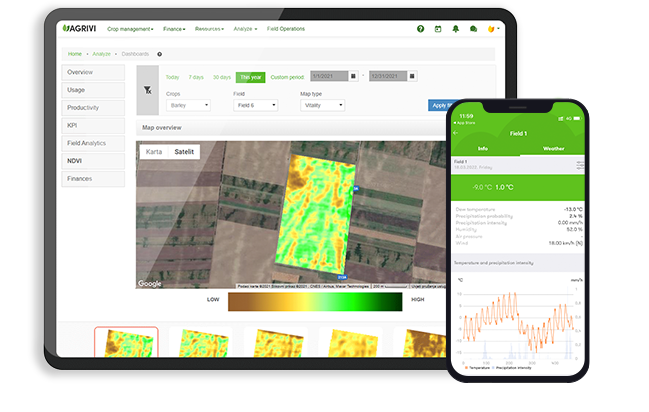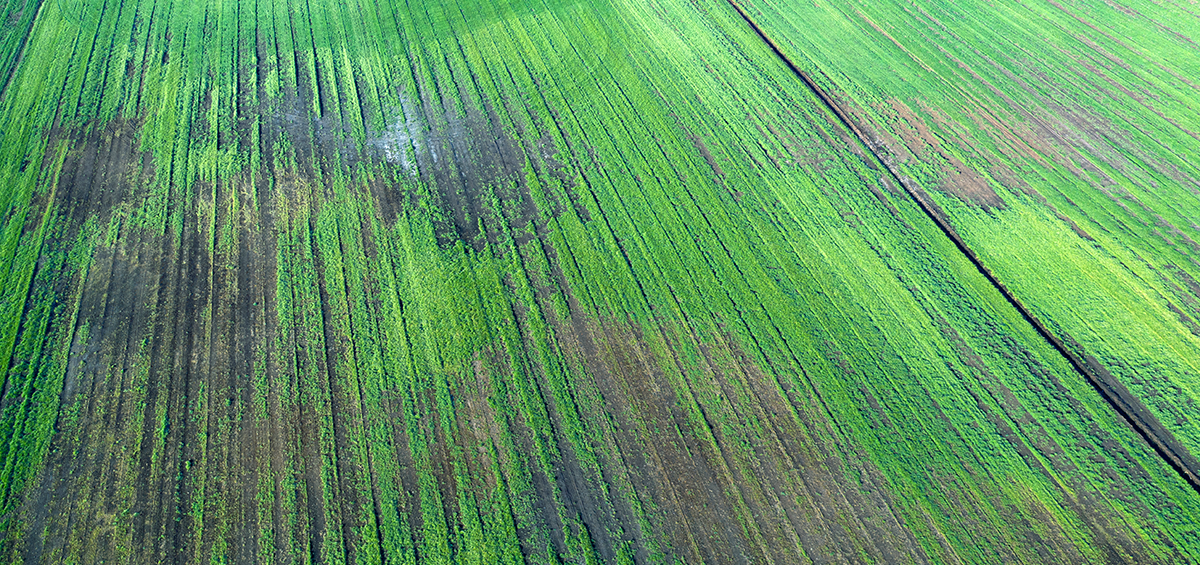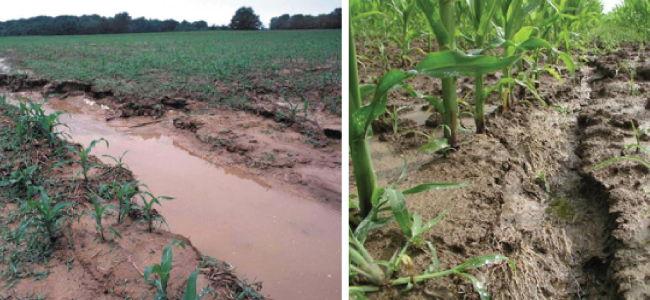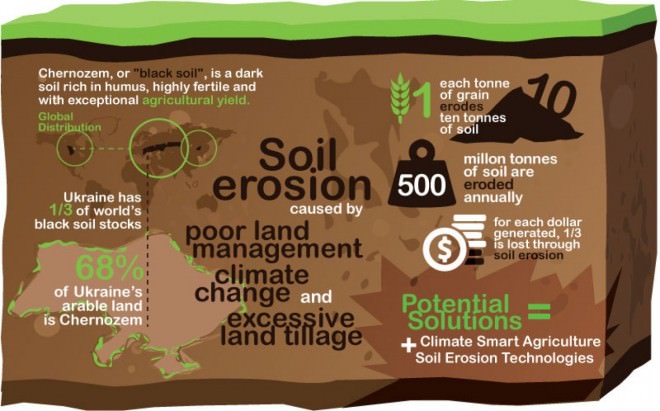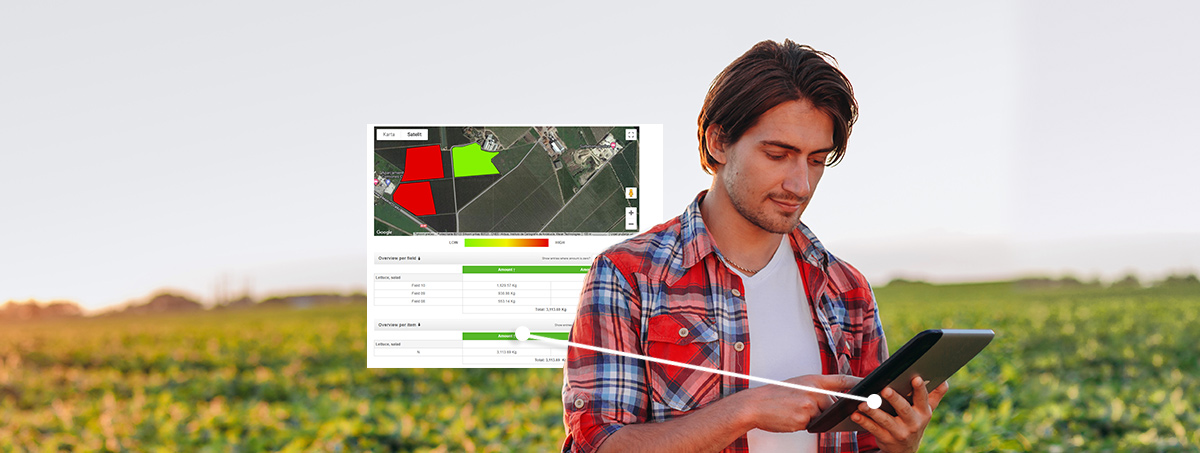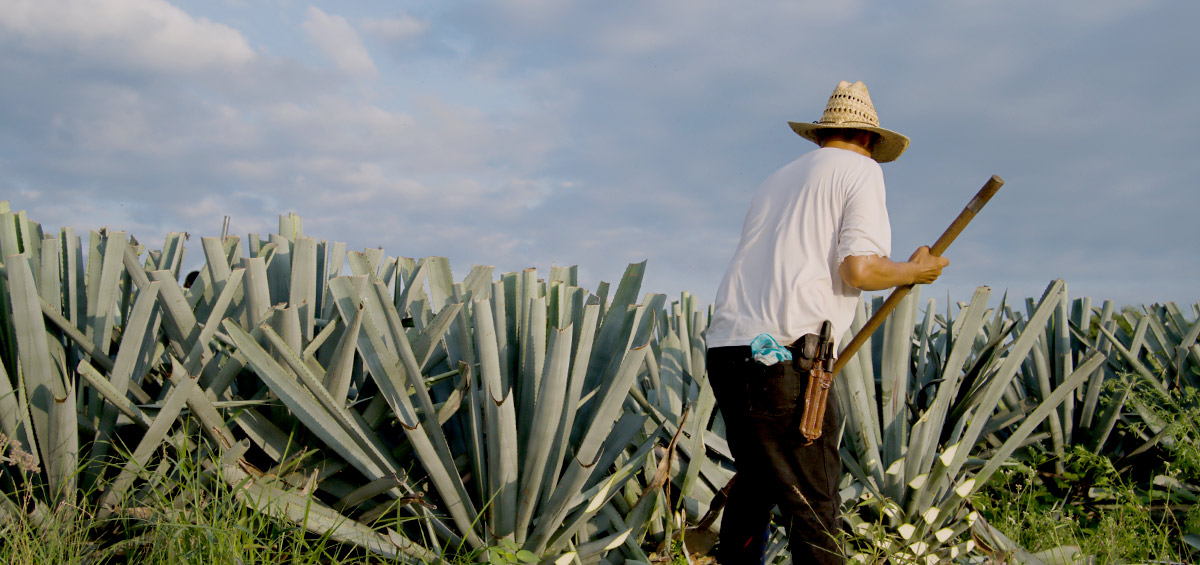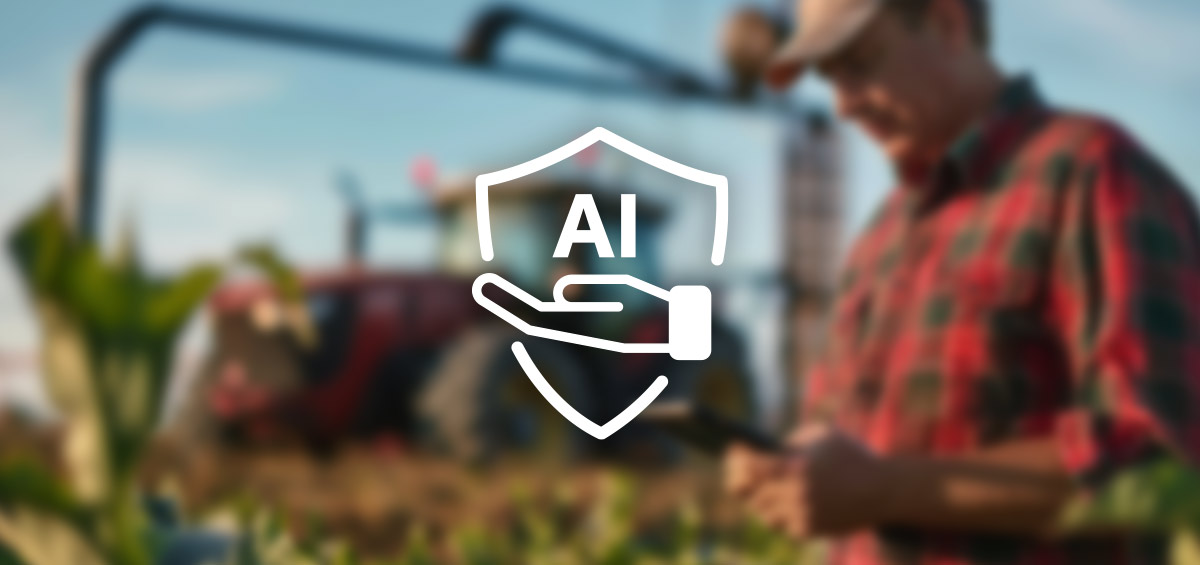Causes of soil erosion
Soil erosion refers to the wearing away of a field’s topsoil by the natural physical forces of water, wind or through farming activities such as tillage (depth, direction and timing of plowing, the type of tillage equipment and the number of passes) and the clearing of vegetation. Clearing vegetation removes the protection of plants and roots needed to lock soil in place. Basically, the more exposed or heavily tilled soil is, the more likely it is to erode during rain or windstorms. Wind can damage young seedlings by blasting them with sand and other small particles. It distributes topsoil, which might uncover and expose some seedlings, while at the same time, burying other seedlings too deep. Erosion, whether it is by water, wind or tillage, involves three distinct actions – soil detachment, movement and deposition. Soil erosion can be a slow process that continues relatively unnoticed, causing serious loss of topsoil. Soil compaction, low organic matter, loss of soil structure, poor internal drainage, salinisation and soil acidity problems are other serious soil degradation conditions that can accelerate the soil erosion process.
Soil erosion reduces cropland productivity and contributes to the pollution of adjacent watercourses, wetlands and lakes. When soil is carried away from a farmer’s field by water, it carries with it contaminants, such as fertilizers and pesticides. This runoff can cause water pollution that contaminates drinking water and disrupts ecosystems of lakes and wetlands. This negatively impacts the fish and wildlife that depend on these downstream waters for food and habitat.
How to reduce soil erosion?
Various soil conservation measures reduce soil erosion by water, wind, and tillage. Tillage and cropping practices, as well as land management practices, directly affect the overall soil erosion problem and solutions on a farm. When crop rotations or changing tillage practices are not enough to control erosion on a field, a combination of approaches or more extreme measures might be necessary, like contour plowing, strip-cropping, or terracing. In more serious cases where concentrated runoff occurs, it is necessary to include structural controls as part of the overall solution – grassed waterways, drop pipe and grade control structures, rock chutes, and water and sediment control basins. One of the best ways to prevent soil erosion is to increase vegetation, crops that provide a full protective cover for a major portion of the year (e.g., alfalfa or winter cover crops), or various plants and trees.
Half of the farm topsoil on the planet has been lost in the last 150 years. In addition to erosion, soil quality is affected by other aspects of agriculture. These impacts include compaction, loss of soil structure, nutrient degradation, and soil salinity. These are very real and at times severe issues. Soil erosion remains a key challenge for farming around the world. Many farmers have already made significant progress in dealing with soil erosion problems on their farms. The health of soil is a primary concern to farmers and the global community whose livelihoods depend on well-managed agriculture. The increase in extreme weather events predicted with climate change will magnify the existing water and wind erosion situations and create new areas of concern. Farmland must be protected as much as possible, with special attention to higher-risk situations that leave the soil vulnerable to erosion.
Regenerative Agriculture Practices with Farm Management Software
Sustainable agriculture is key to reducing the environmental impacts of global farming systems, and healthy soil is a critical component of sustainable farming with numerous positive environmental benefits on ecosystems.
Farming practices that prioritize soil health like using cover crops, crop rotation, and limiting or eliminating tillage reduce soil erosion, improve soil’s water-holding capacity, and improve the soil’s natural fertility, lowering the need for chemical inputs. All of these benefits improve not just the environment but farmers’ profitability.
Comprehensive Farm software management such as AGRIVI and sustainable farming go hand-in-hand. Farm software management helps reduce the risks of sustainable practices by assisting farmers in understanding the impact of their agronomic practices, identifying areas ripe for improvement, optimizing costs and profits by keeping track of sales, expense, and inventory management, and simplifying farm administration. Using satellite imagery with farm software provides real-time insights, allowing farmers to react quickly to field data when their actions can make a difference. And full-crop, field-to-fork traceability helps farmers open up new markets and capture premium prices for their sustainably grown crops.
AGRIVI’s digital agriculture technology uses your farm data and manages your farm tasks to provide insights, efficiencies, and risk management that farmers committed to sustainability need to be successful and profitable in their farm business.
